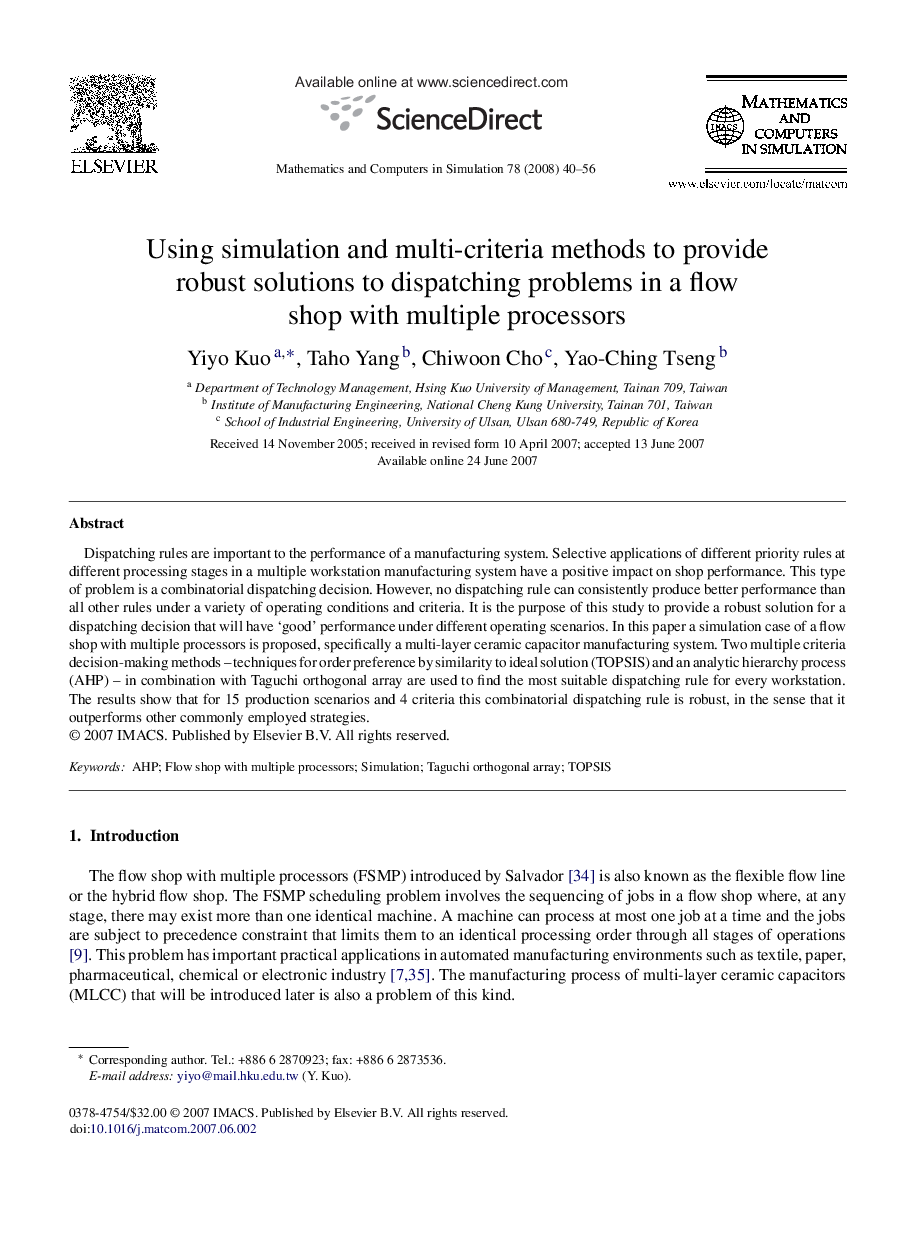| Article ID | Journal | Published Year | Pages | File Type |
|---|---|---|---|---|
| 1140725 | Mathematics and Computers in Simulation | 2008 | 17 Pages |
Dispatching rules are important to the performance of a manufacturing system. Selective applications of different priority rules at different processing stages in a multiple workstation manufacturing system have a positive impact on shop performance. This type of problem is a combinatorial dispatching decision. However, no dispatching rule can consistently produce better performance than all other rules under a variety of operating conditions and criteria. It is the purpose of this study to provide a robust solution for a dispatching decision that will have ‘good’ performance under different operating scenarios. In this paper a simulation case of a flow shop with multiple processors is proposed, specifically a multi-layer ceramic capacitor manufacturing system. Two multiple criteria decision-making methods – techniques for order preference by similarity to ideal solution (TOPSIS) and an analytic hierarchy process (AHP) – in combination with Taguchi orthogonal array are used to find the most suitable dispatching rule for every workstation. The results show that for 15 production scenarios and 4 criteria this combinatorial dispatching rule is robust, in the sense that it outperforms other commonly employed strategies.
